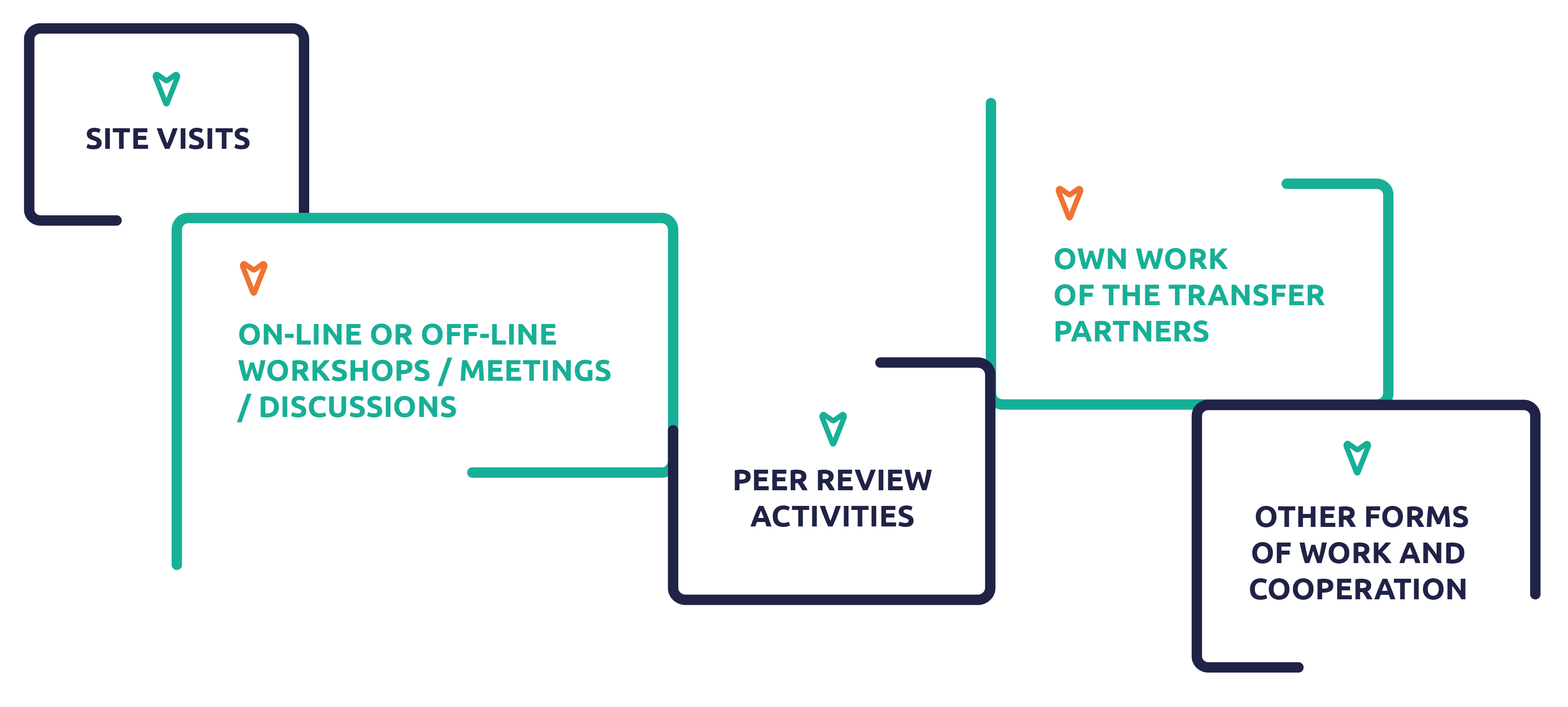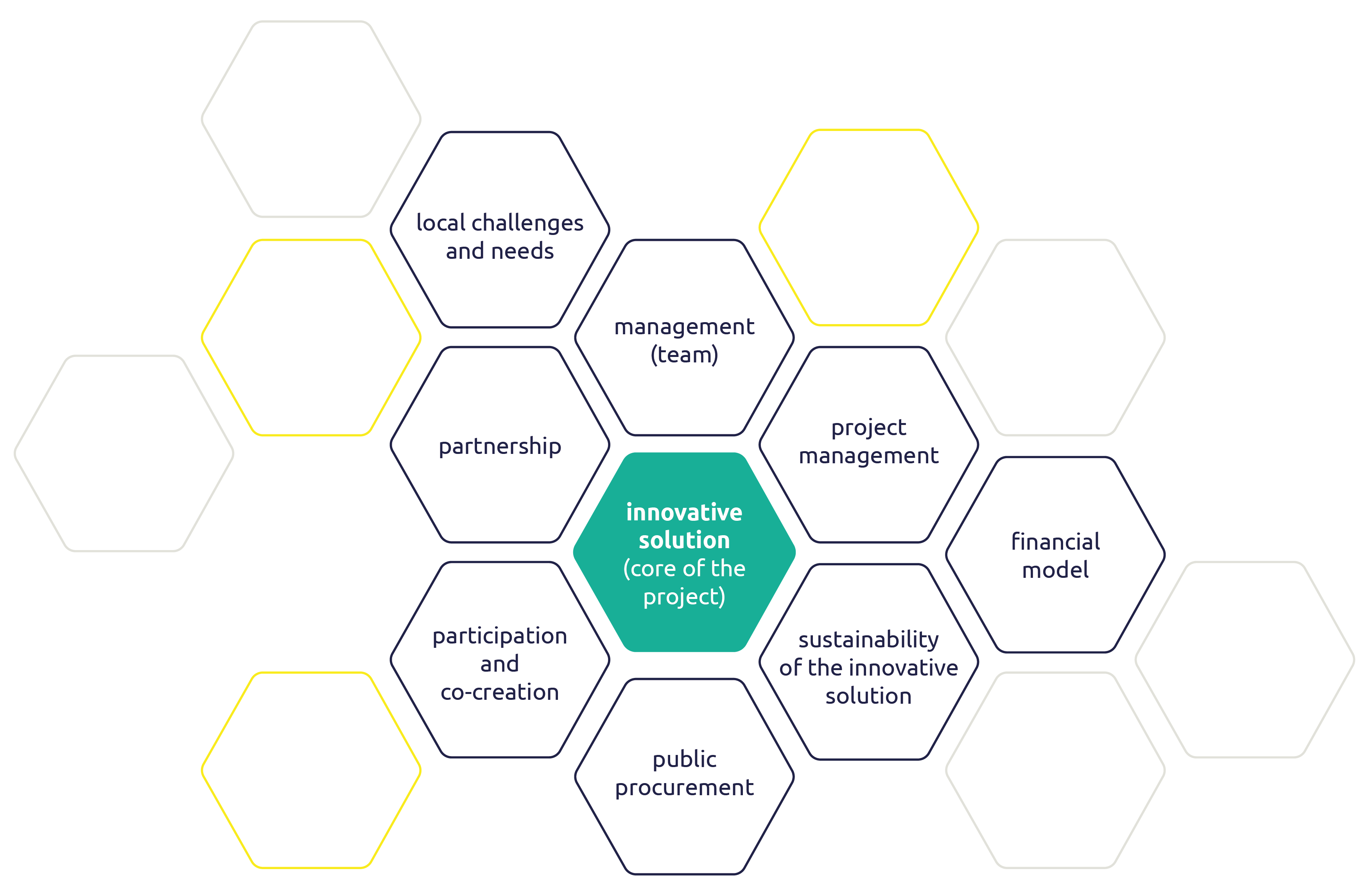Following the abovementioned objectives and description of the Work Package Transfer presented in the Chapter 2.2 “Project Work Plan”, this Work Package should focus on:
- allowing Transfer Partners to follow the planning and piloting of the tested innovative solution,
- allowing Transfer Partners to analyse their local urban contexts in order to better understand how the innovative solution can be adapted to meet local needs and conditions,
- exchange of knowledge and experience between all the Project Partners,
- sharing critical inputs that can both bring the external perspective to the EUI-IA project and inspire Transfer Partners,
- the preparation by Transfer Partners of a documentation that can serve them for the future replication of the innovative solution (Replication Feasibility and Opportunity Study and investment documentation),
- the preparation, by the MUA and its Project Partners, of the legacy of the EUI-IA project in the form of a EUI - Innovative Solution Model to be used by other EU cities interested in the innovative solution.
The above activities can be realised using the following palette of working methods (Figure 6 below):
Figure 6. Transfer cooperation working methods

- Site visits. Site visits can take place both in the city where EUI-IA project is being implemented and in Transfer Partners’ cities (local visits) to allow all Project Partners to exchange the knowledge and experience, as well as to better understand local situations in the Transfer Partners cities, in order to advise on adapting innovative solutions to local contexts. It is obligatory that a minimum 3 site visits in the MUA’s city will take place:
- opening visit to discuss framework for cooperation, details of the work plan, timeline, communication tools, etc.;
- a visit dedicated to in-depth understanding of the innovative solution and
- closing visit summarising transfer cooperation.
- On-line or off-line workshops/meetings/discussions about the aspects of preparing and implementing the innovative solution. Partners should make sure that not only the innovative solution as such is discussed but also all other aspects necessary for its successful implementation and further functioning (Figure 7 below).
Figure 7. Examples of the different aspects of the process of the innovative solution’s implementation

- Peer review activities – evaluation of the work done by the Transfer Partners allowing everyone to benefit from external critical inputs.
- The own work of the Transfer Partners allowing them to further capitalise on learnings coming from the transfer exchange but also to prepare for future adaptation and replication of the innovative solution.
- Other forms of work and cooperation that the Project Partners wish to introduce: work-shadowing, conferences, thematic activities, being part of Advisory Board or Steering Committee, etc.
Transfer Partners are expected to prepare the following pre-defined learning and investment deliverables and outputs:
- Transfer Capacity Survey – two self-assessment surveys for each Transfer Partner (at the beginning and at the end of the Work Package Transfer) allowing Transfer Partners to assess their readiness for replicating innovative solution at the beginning and at the end of the transfer cooperation (learning deliverable).
- Replication Feasibility and Opportunity Study – (one per each Transfer Partner) summarising what is the local challenge, how the transferred innovative solutions can be adapted to the local context, what are the necessary steps to implement it, what are the identified funding sources, how management structure and key management processes can be shaped, etc. (investment output).
Moreover, if fitting within the timeframe and allocated budget, Transfer Partners are also allowed to finance:
- Investment documentation needed for the implementation of the innovative solution – expertise, legal analysis, construction project, environmental impact analysis, etc. and the implementation of a small-scale pilot investments.
The MUA is expected to prepare a following output:
- EUI - Innovative Solution Model – a final document focused on the transferability and scaling up of the tested innovative solution in order to allow others (not only Transfer Partners but also all interested EU cities) to learn about the findings of the experimentation and receive some guidance on how to approach replication. It is expected that Transfer Partners will contribute to the development of this document adding their perspective on the process. The EUI - Innovative Solution Model will be publicly available on the EU Knowledge Exchange Sharing Platform and EUI webpage as a legacy of the EUI-IA project implementation.
Another question?